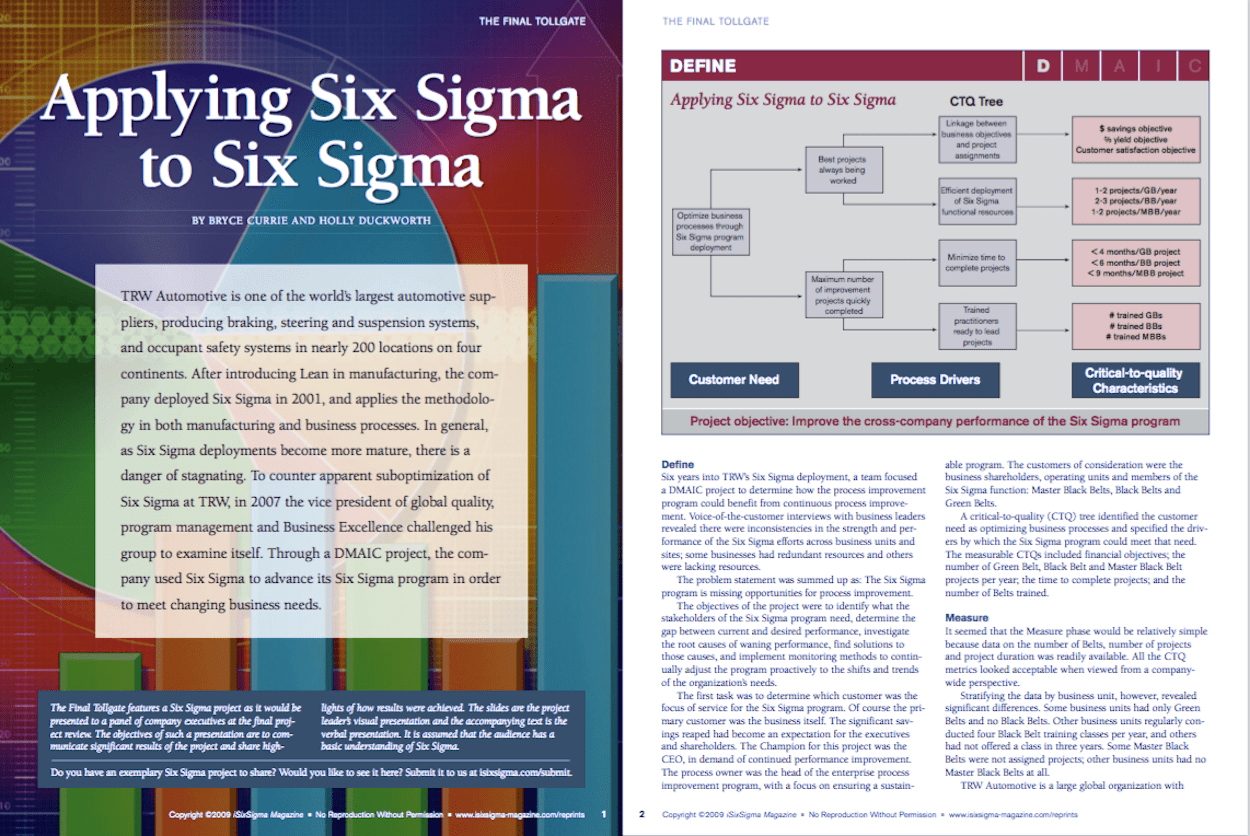Applying Six Sigma To Six Sigma Project Example
Applying Six Sigma To Six Sigma Project Example
Couldn't load pickup availability
TRW Automotive Six Sigma project identified a total of 52 improvement actions which was designed to close the gap of differences among business units
--
TRW Automotive is one of the world's largest automotive suppliers, producing braking, steering and suspension systems, and occupant safety systems in nearly 200 locations on four continents.
After introducing Lean in manufacturing, the company deployed Six Sigma in 2001, and applies the methodology in both manufacturing and business processes.
In general, as Six Sigma deployments become more mature, there is a danger of stagnating. To counter apparent suboptimization of Six Sigma at TRW, in 2007 the vice president of global quality, program management and Business Excellence challenged his group to examine itself.
Through a DMAIC project, the company used Six Sigma to advance its Six Sigma program in order to meet changing business needs.
Define
Six years into TRW's Six Sigma deployment, a team focused a DMAIC project to determine how the process improvement program could benefit from continuous process improvement.
Voice-of-the-customer interviews with business leaders revealed there were inconsistencies in the strength and performance of the Six Sigma efforts across business units and sites; some businesses had redundant resources and others were lacking resources.
Measure
It seemed that the Measure phase would be relatively simple because data on the number of Belts, number of projects and project duration was readily available. All the CTQ metrics looked acceptable when viewed from a companywide perspective.
Analyze
The primary focus in the Analyze phase was to further understand the differences among business units by comparing attitudinal data from the survey and performance data from the CTQ characteristics.
Improve
After considerable analysis comparing attitudes, practices and performance, the team identified a total of 52 improvement actions – 19 related to people, 10 to communication, nine to processes, eight to organizational structure, and six to leadership. For each category, a paired-choice matrix was used to prioritize the actions.
Control
With TRW's Six Sigma program still saving the company multiple millions of dollars annually eight years after the initial deployment, this project was not aimed at salvaging the program from disaster. Rather, it was a recognition of the need for the program to use its own continuous process improvement methods to continually improve itself.
After considerable analysis comparing attitudes, practices and performance, the team identified a total of 52 improvement actions – 19 related to people, 10 to communication, nine to processes, eight to organizational structure, and six to leadership. For each category, a paired-choice matrix was used to prioritize the actions.
[caption id="attachment_17140" align="alignnone" width="1250"] Sample image from project example[/caption]
Sample image from project example[/caption]
Open Source Six Sigma
More products from iSixSigma



